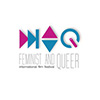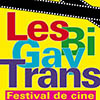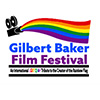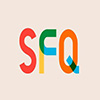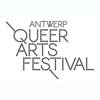
Queer City Cinema
Queer City Cinema Media Arts Festival is a three-day annual festival that is comprised of international, national and local media artwork and related activities that may include panel discussions and/or artist talks. Programming of media art will include screenings with Aboriginal/Indigenous content, queer youth and local media artworks.
2025 films...
HOST
Zachary Longboy, 10:44 min
The artist leads a procession of his infections (HIV, Parkinson's, spinal stenosis, and bedbugs) to the water in this ritual of co-existence.
On and On and On
Evelyn Pakinewatik, 10:18 min
I’ve spent my whole life listening to and often recording interviews with different members of my family and extended community. One of the phrases I hear most often is “on and on and on” as a way to conclude a point; or to extend it. Anishinaabe often talk in circles, or maybe to be colonized is to see how obvious and frequent the repetitions actually are. The people are the land, yet artificially codified as other. How we define the categories of personhood are all inherently tied to how we define the worth of all things; the disabled body is the unproductive body is the body without worth is the anti-colonial body. All is destroyed, life continues, and it just goes on and on and on.
The Living Wardrobe
Martí Madaula Esquirol, 18:00 min
Synopsis: Martí arrives in Bilbao for an artistic residency. His clothes take up only a small part of the huge wardrobe in his new room. When he meets someone, the wardrobe gradually begins to fill up. But where did the emptiness go, the free space, the little corner of his own? Did the wardrobe swallow it all, or was it love?
Queer Dream Triptych
Matt McKinzie, 2:30 min
Frames from Donald Fox's psychedelic Omega — that ‘deals with the death and rebirth of mankind’ — are newly suffused with a poem written by the filmmaker during a period of personal transformation related to sexuality, chronic illness, familial trauma, and queer ancestry. —MIX NYC
Care & Tenderness
Jaye Kovach & Cat Haines, 20:12 min
Artist in attendance
Two trans dykes interview one another about connection, community, kink, and sexuality. In this DIY Super-8 film, the artists seek to document and explore their embodied, trans-for-trans and butch-femme relationship through the frameworks of kink and the everyday. This short and experimental film is unabashedly queer and trans, and focuses on the artists’ bodies and their queer relationships to one-another. As Mirha-Soleil Ross and Xanthra Phillipa MacKay note in Gendertroublemakers (1993), “We [transsexuals] have our own culture, language, stories and thus it is time for us and only us to document ourselves.”
These Kids Don’t Get It, Ma
June Jung, 6:28 min
A trans woman attempts to translate a poem to her mother over the phone. Subtitles escape containment. Diegesis explodes.
ENTRAILES
Nadia Louis-Desmarchais, 12:28 min
In depths is an immersive exploration of the meanders of black consciousness and corporality. A multi-format alliance, oscillating between archives, voice messages and mise en scene, the film explores the interstices of representations of the black body and delves into the heart of the intergenerational traumas that have shaped it. The film explores in depth the question: how does one become black?
CARCASS(E) / UNDERGLASS
Amina Ross, 18:19 min
In a fragmented, inhospitable world, a whispered voice and a butcher’s vivid account of breaking down flesh guide us through a surreal exploration of the body, its vulnerabilities, the oppressive systems that deconstruct it, and its quest for preservation and support.
everything is ok | an ASMR to help you sleep at night
Autojektor, 5:00 min
You are a good person. You are a good person. You are a good person….The eyes of trans porn stars of yore are scratched out, suggesting a vandal’s demonization. But the presence of a soothing voice over, who delivers affirmations to those both on-screen and in the audience, refutes this characterization—or perhaps suggests the power of their coexistence.
HVN
P. Staff, 5:00 min
Combining digital and analogue filmmaking techniques with poetry, hand painted animation and industrial sound, HVN explores pleasure and pain in the sick or debilitated body with Staff’s ongoing interest in the volatility of queer and trans bodies. Glimpses of footage – a shower scene, traffic, friends gathering – are obscured and revealed by layers of hand painted film and lettering, eventually giving way to a titular poem that asks what happens to us in states of dreaming, volatility, inebriation and exhaustion.
Deliberate Ruins
Shirine Shah, 11:00 min
Deliberate Ruins is a poetic exploration of their first year away from home and the onset of their medical transition. Shot on 16mm Bolex and Mini DV, this experimental diary film weaves together a series of conflicting anxieties—between the self-propulsion of faith and the gravitational pull of returning to one’s origins. Through cryptic and often destructive poems, alongside vocalized diary entries, Shah delves into the complex tensions between choice and the inescapable weight of past histories. Intimate moments of dissonance blend with historical fragments that simultaneously trap and liberate the speaker.
I would like to visit
Muhammad Nour ElKhairy, 4:25 min
An experimental short and installation work that combines text and film to explore the simple desire to travel, through the cultural and political realities of being Palestinian. Soundtracked with the anxiety of disposition, the work opts to show a close-up of text being typed and edited on word-processing software, the work complicates a simple desire to travel by adding to it the social, cultural and political realities of being a Palestinian on Indigenous land in Turtle Island.
The Capacity for Adequate Anger
Vika Kirchenbauer, 18:00 min
A return to the village where she grew up after an absence of over ten years marks the point of departure for this video work, which Vika Kirchenbauer produced for the occasion of the her first institutional solo exhibition. A collage of ephemera both personal and public traverses the distance between present and past in a self-reflexive form of artistic critique that considers contemporary art from a perspective of class. Through voiceover and flashes of imagery Kirchenbauer’s autobiographical video contemplates the sociological dimensions of negative affect, and what forms of political agency such emotions facilitate or impede.
Winter Kept Us Warm
David Sector, 82:00 min
Released in 1965, Winter Kept Us Warm is Canada’s first film about a gay romance.
Winter explores a relationship between two young men at the University of Toronto in the early 1960s, a period when homosexuality was still a crime in Canada.
A true student film, Winter was written and directed by David Secter, a twenty-two-year-old English major, shot with amateur actors and a volunteer crew, and completed on a budget of only $8,000. Against the odds, the film was a huge success. Lauded by critics at home and abroad, it was selected to open the Commonwealth Film Festival, played art house cinemas across the United States and Europe, and became the first Anglo-Canadian fiction feature to screen at Cannes. Influential film journals including Sight and Sound and Cahiers du cinéma covered it, as did mainstream publications such as Variety and the New York Times. David Cronenberg has cited it as influential on his own work. Despite this acclaim, the film has largely vanished from the cultural consciousness and few queer people today have even heard of it, let alone seen it.






